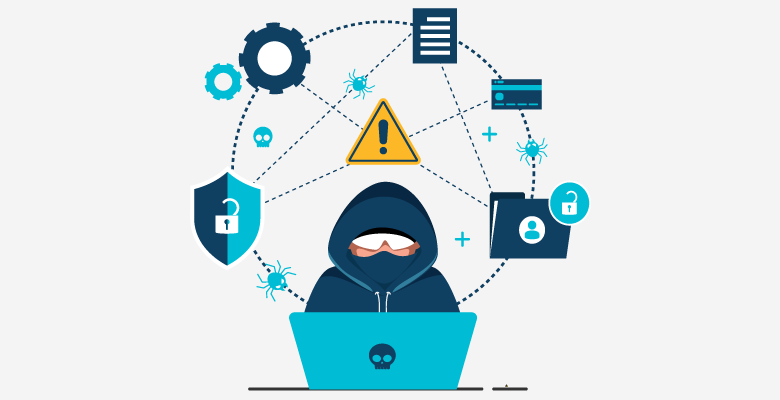What are Cybersecurity Threats?

What are Cybersecurity Threats?
Cybersecurity threats are malicious activities aimed at compromising the confidentiality, integrity, and availability of information systems and data. These threats can take many forms, ranging from simple phishing attacks to complex malware that infiltrates corporate networks. As technology advances, so do the methods used by cybercriminals, making it crucial for organizations and individuals to stay informed and vigilant.
This article delves into the types of cybersecurity threats, their potential impact, and strategies to mitigate these risks.
Types of Cybersecurity Threats
Cybersecurity threats can be categorized into several types. Understanding these categories helps in identifying potential risks and implementing appropriate defenses.
- Malware – Malware, short for malicious software, is designed to damage, disrupt, or gain unauthorized access to computer systems. Common types of malware include viruses, worms, Trojans, and ransomware. Ransomware encrypts files and demands payment for their release, causing significant financial and operational damage.
- Phishing – Phishing attacks use deceptive emails or messages to trick individuals into revealing sensitive information, such as usernames, passwords, or credit card numbers. These attacks often appear legitimate, making them difficult to detect. Spear phishing targets specific individuals or organizations, increasing their effectiveness.
- Denial-of-Service (DoS) Attacks – DoS attacks aim to overwhelm a system or network by flooding it with traffic, rendering it inaccessible to users. Distributed Denial-of-Service (DDoS) attacks use multiple compromised systems to launch a coordinated attack, amplifying its impact.
- Man-in-the-Middle (MitM) Attacks – MitM attacks occur when an attacker intercepts communication between two parties. This allows the attacker to eavesdrop or manipulate the conversation, potentially gaining access to sensitive information.
- Insider Threats – Insider threats involve current or former employees, contractors, or business partners who misuse their access to sensitive information. These threats can be malicious, as in cases of sabotage, or unintentional, such as accidental data exposure.
- Zero-Day Exploits – A zero-day exploit targets vulnerabilities in software that are unknown to the vendor. These exploits can be particularly dangerous because there are no patches available to fix the vulnerabilities, leaving systems exposed until a solution is implemented.

Potential Impact of Cybersecurity Threats
The consequences of cybersecurity threats can be severe, affecting individuals and organizations alike. Some potential impacts include:
- Financial Loss – Cyberattacks can result in significant financial losses due to theft, ransom payments, and recovery costs. Businesses may also face penalties for failing to protect customer data.
- Reputation Damage – A successful cyberattack can damage an organization’s reputation, eroding customer trust and loyalty. Recovery from such damage can take years and require substantial investment in public relations efforts.
- Operational Disruption – Cyberattacks can disrupt business operations, causing delays, reduced productivity, and potential loss of customers. In severe cases, organizations may be forced to shut down temporarily while they address the breach.
- Legal Consequences – Organizations that fail to protect sensitive data may face legal actions and regulatory fines. Data breaches involving personal information often trigger mandatory reporting and can lead to lawsuits from affected individuals.
- Data Loss – Cybersecurity threats can result in the loss or corruption of critical data. Recovering lost data can be challenging and costly, especially if backups are not in place.
Strategies to Mitigate Cybersecurity Threats
To protect against cybersecurity threats, individuals and organizations should implement a multi-layered security strategy. Here are some effective measures:
- Regular Software Updates – Keeping software up to date is crucial in protecting against vulnerabilities. Regularly applying patches and updates can help close security gaps that cybercriminals might exploit.
- Employee Training – Educating employees about cybersecurity threats is essential. Training programs can help staff recognize phishing attempts, understand safe browsing practices, and report suspicious activities.
- Strong Password Policies – Implementing strong password policies can help prevent unauthorized access. Encourage the use of complex passwords and multi-factor authentication to enhance security.
- Network Security Measures – Deploying firewalls, intrusion detection systems, and secure configurations can help protect networks from unauthorized access. Regularly monitoring network activity for unusual patterns can also help detect potential threats early.
- Data Encryption – Encrypting sensitive data ensures that even if it is intercepted, it remains unreadable without the appropriate decryption keys. This adds an extra layer of protection for confidential information.
- Incident Response Plan – Developing an incident response plan allows organizations to respond quickly and effectively to cyber incidents. This plan should include procedures for containing the threat, communicating with stakeholders, and recovering from the attack.

The Evolving Landscape of Cybersecurity Threats
As technology continues to evolve, so do the tactics employed by cybercriminals. Emerging technologies, such as artificial intelligence (AI) and machine learning, are being used to enhance cyberattack strategies. Conversely, these technologies can also be leveraged to strengthen defenses against threats.
- AI and Automation – Cybercriminals are increasingly using AI to automate attacks, making them more sophisticated and harder to detect. Automated systems can launch attacks at scale, overwhelming traditional defenses.
- IoT Vulnerabilities – The proliferation of Internet of Things (IoT) devices introduces new vulnerabilities. Many IoT devices lack robust security features, making them attractive targets for cyberattacks. Organizations must prioritize securing these devices to prevent potential breaches.
- Cloud Security Concerns – As more businesses migrate to cloud services, securing cloud environments has become critical. Misconfigured cloud settings can expose sensitive data, making it essential to implement strong security measures and regular audits.
Conclusion
Cybersecurity threats are a significant concern for individuals and organizations in today’s digital landscape. By understanding the various types of threats, their potential impacts, and effective mitigation strategies, we can better protect our data and systems.
Staying informed about the evolving cybersecurity landscape is crucial for developing a proactive security posture. By implementing strong security measures and fostering a culture of awareness, we can minimize risks and respond effectively to potential threats. In a world where cyberattacks are becoming increasingly common, vigilance and preparedness are key to safeguarding our digital lives.




